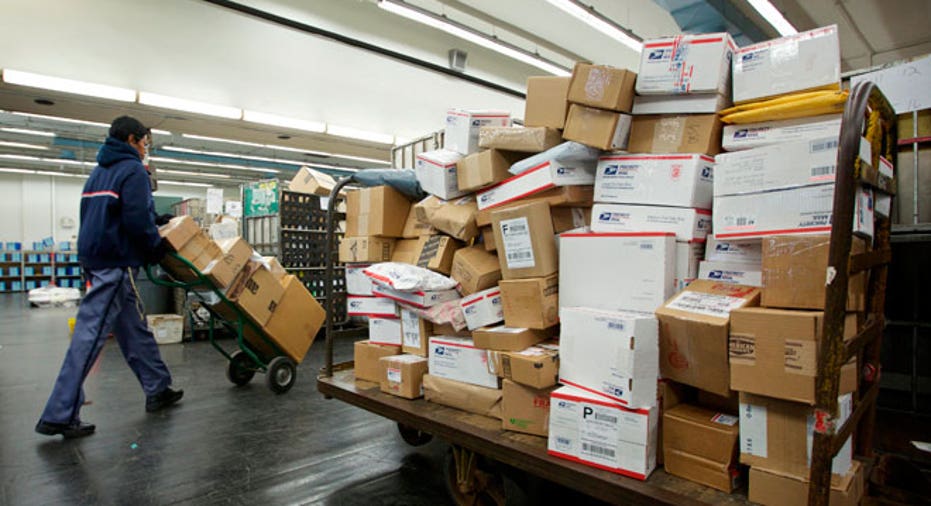Same-Day Delivery: The Future of Shipping, or a Bunch of Hot Air?

Bricks-and-mortar stores have had e-commerce giants breathing down their necks for quite some time, with their lower-priced offerings and convenience, but the growing promise of same-day delivery could take away a key advantage of traditional stores: immediacy.
“Look at how we shop now,” says Jed Kleckner, CEO of delivery.com. “Ten years ago, we might have surfed the web to find products, but now everything is done on our mobile phone, we want everything now, there’s no waiting and small businesses better be ready to deal with that demand.”
If e-commerce can pull off same-day delivery, which experts say is a big 'if', traditional bricks-and-mortar stores will have to learn to match the promise or compete with different offerings.
Online giant Amazon (NASDAQ:AMZN) announced last year it was looking to offer same-day delivery to shoppers, but has since backed off the idea, citing the high cost.
“It’s the stupidest idea ever,” says Forrester analyst Sucharita Mulpuru-Kodali. “Not only is it incredibly expensive -- and consumers won’t pay extra -- the strategy is to get consumers addicted to the behavior to help subsidize the cost, but that just isn’t going to happen.”
Same-day delivery has been around since the dawn of time, says Andrew Schmahl, principal at Booz & Co. “Back in the day, it was the guy running a marathon to deliver news. It has always been the most expensive method of delivery around. It popped back up and failed during the dot-com bubble, and for some reason, we are seeing a resurgence of it now.”
Indeed, many retailers have announced plans to offer same-day delivery, including Google (NASDAQ:GOOG), Wal-Mart (NYSE:WMT) and eBay (NASDAQ:EBAY).
Is the Demand There?
It’s no secret we’re a society looking for instant gratification, but what happens when that need for immediacy coincides with our budget consciousness?
A recent report from the Boston Consulting Group shows only 9% of surveyed consumers cited same-day delivery as a top driver when shopping online. Close to 75% of the 1,500 consumers surveyed report free delivery as a priority and 50% want lower prices.
“Right now, the demand isn’t there, but it will be soon, especially for the higher-income shoppers,” says Himanshu Sareen, founder and CEO of Icreon. “People in higher income brackets are definitely needing that instant gratification and just as e-commerce sales took off when free shipping became more common, so too will same-day delivery.”
A study from Booz & Company reports same-day delivery might be an attractive option, but it’s still a niche offering with 88% of customers saying they wouldn’t pay more than $10 for same-day shipping.
Shopping habits might also run counter to same-day delivery demands. The Booz report found 60% of online shoppers buy after 5 p.m. ET, creating a short delivery window.
“Right now same-day delivery is just not needed in most markets,” says Mulpuru-Kodali. “There are some companies that have it down pat, like Dominoes, but that is a different business model with a finite amount of merchandise and a finite delivery space. They are doing one thing: making pizza.”
She expects same-day delivery to continue to gain traction in the grocery industry in certain markets, but not enough to become a major factor in big corporations’ business models. “Right now, you still get delivery windows when ordering groceries, so the logic is: I don’t have time to shop, but I have three to four hours to wait around for my order? It just doesn’t make sense.”
Same-day delivery is an expensive offering, and the only way to make it cost-effective is to attach the promise to small, easily-transportable items that carry high margins.
“Even with Amazon.com, which has a very long tail, just because I am buying milk, office supplies or a pair of shoes, doesn’t mean I am going to throw in a digital camera — and that’s the only way that delivery becomes profitable for the company.”
Can Small Businesses Still Compete?
Betsy Burton has run the King's English Bookshop in Salt Lake City, Utah, for 36 years, and has battled to survive the surge of bookstore chains in the 1990s, and now, online giants, and pins her success on always offering value and becoming part of the community.
“We buy very carefully, we know the books we offer, we learn about our customers and we match them with books they will like. After all, at the end of the day, it doesn’t matter how cheap or fast you get a book if you don’t like it.”
Cliff Courtney, chief marketing officer at Zimmerman Advertising, says when it comes to competing against the corporate giants, small businesses need to focus on their brand. “I get free coffee at work, but I still stop by Starbucks (NASDSAQ:SBUX) every morning, because it’s an experience. That’s what small businesses need to always remember. If they fail, it’s because they didn’t connect with their customers.”
Same-day delivery is only possible if businesses -- no matter their size -- learn how to leverage their delivery costs. Creating a low-cost model requires working with delivery companies and using technology to maximize efficiency.
Mulpuru-Kodali advises small-business owners to work with local and national courier networks to use any extra capacity they might have and borrow their delivery infrastructures. “Combining local services with the U.S. Postal System and the likes of UPS and FedEx could help them compete, but there will be a steep learning curve.”
Sareen also recommends businesses learn how to better track their inventory with machine intelligence technology.
“What is going to be key is putting in some predictive mechanism to figure out sales, track current inventory flow and find merchandise when ordered. Once you have the required products, locating a delivery. But that all comes at a cost.”



















